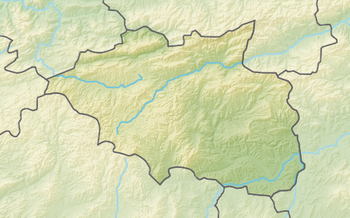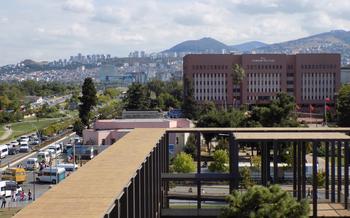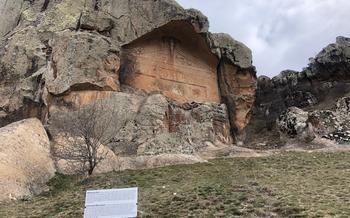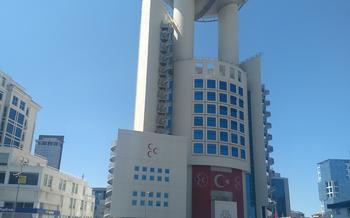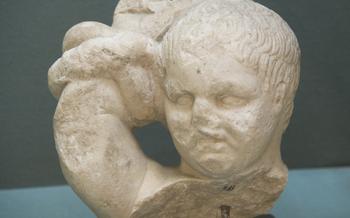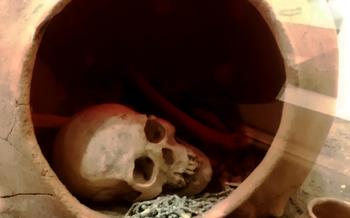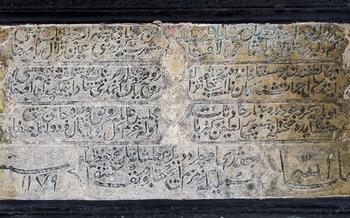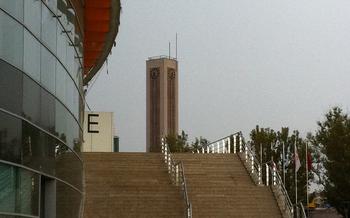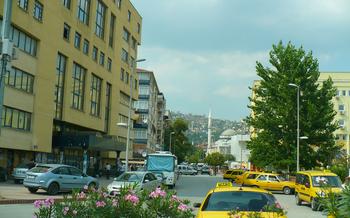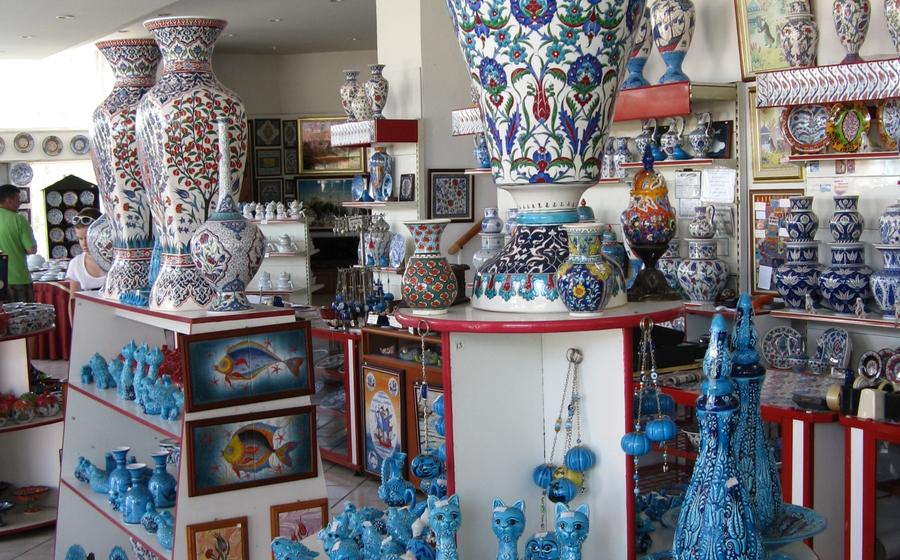
Phrygia Yazılıkaya Monuments
- A Monumental City in the Heart of Phrygia
- Marvel at the Ancient Rock Reliefs
- Discover the Phrygian Civilization
- Immerse Yourself in the Natural Beauty
- Uncover the Secrets of the Phrygian Alphabet
- Witness the Masterful Craftsmanship
- Explore the Phrygian Village of Yazılıkaya
- Indulge in Local Delights
- Visit the Kütahya Archaeological Museum
- Stroll Through the Historic Streets of Kütahya
- Shop for Local Handicrafts
- Plan Your Visit
- Be Respectful
- Insider Tip: Hidden Gem
A Monumental City in the Heart of Phrygia
In the heart of Turkey's ancient land of Phrygia, a captivating city carved into the very rock awaits your discovery. The Phrygia Yazılıkaya Monuments, an awe-inspiring ensemble of rock reliefs and historical wonders, stand as a testament to the ingenuity and artistry of the Phrygian civilization.
Located in the charming village of Yazılıkaya, within the enchanting province of Kütahya, this extraordinary site offers a unique glimpse into the past. Once a thriving center of Phrygian culture, Yazılıkaya invites you on a journey through time, where legends intertwine with history, and nature's beauty harmonizes with human creativity.
Marvel at the Ancient Rock Reliefs
The Phrygia Yazılıkaya Monuments are home to an array of impressive rock reliefs that offer a glimpse into the artistic and cultural heritage of the Phrygians. These reliefs depict a range of subjects, including deities, animals, and scenes from everyday life. They are a testament to the skill and artistry of the Phrygian people, and provide valuable insights into their beliefs and customs.
One of the most famous reliefs at the site is the Midas Monument, which depicts King Midas, the legendary ruler of Phrygia. The monument is approximately 10 meters high and 7 meters wide, and features a detailed carving of Midas seated on a throne, with his feet resting on a footstool supported by two lions. The relief also includes inscriptions in the Phrygian language, which provide valuable information about the king's reign.
Other notable reliefs at the site include depictions of the Phrygian goddess Cybele, the god Men, and various animals, such as lions, bulls, and deer. These reliefs are often accompanied by inscriptions in the Phrygian language, which provide additional information about their significance.
The rock reliefs at the Phrygia Yazılıkaya Monuments are a valuable source of information about the Phrygian civilization. They offer insights into the religious beliefs, cultural practices, and artistic traditions of this ancient people. They are a must-see for anyone interested in the history and culture of Anatolia.
Discover the Phrygian Civilization
The Phrygians were an ancient people who originated in the Balkans and migrated to Anatolia around the 12th century BCE. They established a powerful kingdom with its capital at Gordion, located near modern-day Ankara. The Phrygians were known for their advanced culture, which included a written language, a sophisticated system of government, and a rich artistic tradition.
They were skilled metalworkers and produced exquisite jewelry, weapons, and armor. The Phrygians also had a strong religious tradition and worshipped a variety of gods and goddesses. Their culture was heavily influenced by their neighbors, the Hittites and the Greeks, and they played an important role in the development of ancient Anatolian civilization.
The Phrygians left a lasting legacy on the region, and their influence can still be seen today in the many archaeological sites and artifacts that have been discovered. The Phrygia Yazılıkaya Monuments are one of the most important of these sites, and they provide a valuable glimpse into the life and culture of this ancient civilization.
Immerse Yourself in the Natural Beauty
The Phrygia Yazılıkaya Monuments are not just a historical treasure trove; they are also nestled amidst a breathtaking natural landscape that will captivate your senses. The surrounding countryside is a tapestry of rolling hills, lush forests, and sparkling streams, creating an idyllic backdrop for your exploration.
As you wander through the ancient site, take some time to appreciate the natural beauty that envelops you. The fresh air invigorates your lungs, and the gentle breeze rustles through the leaves of the trees, creating a soothing symphony. The sun's golden rays illuminate the rock reliefs, casting intricate shadows that dance and play across the stones.
For those who seek a more active experience, the area offers a range of outdoor activities. Lace up your hiking boots and embark on a scenic trail that leads you through the picturesque landscape. As you trek along the winding paths, keep an eye out for local flora and fauna, such as colorful wildflowers, soaring eagles, and graceful deer.
Find a secluded spot amidst the natural splendor and enjoy a leisurely picnic with loved ones. Spread out a blanket, unpack your delicious Turkish delicacies, and savor the flavors while immersed in the tranquility of your surroundings.
Birdwatching enthusiasts will delight in the diverse avian life that calls this area home. Bring your binoculars and scan the skies for a variety of bird species, including migratory birds that grace the region with their presence. The sweet melodies of their songs will fill the air, creating a harmonious chorus that adds to the enchanting atmosphere.
Uncover the Secrets of the Phrygian Alphabet
The Phrygian alphabet holds immense historical significance, as it represents one of the earliest known writing systems in Anatolia. Developed by the Phrygians, this alphabet consists of 20 letters, some of which resemble Greek characters. The Phrygian language, closely related to Greek and Armenian, was spoken throughout the Phrygian kingdom and beyond.
While relatively few Phrygian inscriptions have been discovered, those found at the Yazılıkaya Monuments provide valuable insights into the Phrygian civilization. These inscriptions, often carved on stelae or rock surfaces, range from short dedications to longer texts. They offer glimpses into the religious beliefs, mythology, and daily lives of the Phrygians.
For example, one of the most significant Phrygian inscriptions found at Yazılıkaya is the "Midas Stele." This stele features a relief depicting King Midas, one of the most famous Phrygian rulers, and an accompanying inscription in the Phrygian language. The inscription records Midas's construction of a temple and his dedication to the goddess Cybele.
These inscriptions not only shed light on the Phrygian language and writing system but also provide historical information about the Phrygian kingdom. They mention rulers, battles, treaties, and religious practices, contributing to our understanding of this ancient civilization.
Witness the Masterful Craftsmanship
The Phrygian Yazılıkaya Monuments stand as a testament to the exceptional stone carving skills of the Phrygian civilization. The intricate details and symbolism in the reliefs showcase the masterful craftsmanship that went into their creation.
The Phrygians employed various techniques to achieve the remarkable level of detail in their rock carvings. They utilized chisels and hammers to meticulously shape the stone, creating smooth surfaces and precise lines. Skilled artisans carefully carved intricate patterns, figures, and inscriptions into the rock, bringing life to the scenes depicted in the reliefs.
One of the most striking features of the Phrygian rock reliefs is their three-dimensional quality. The figures appear to emerge from the rock, creating a sense of depth and movement. This effect is achieved through the use of undercut carving, where the background is carved away to create a raised surface for the figures.
The Phrygians also demonstrated their mastery of composition and perspective in their reliefs. The scenes are often arranged in a hierarchical manner, with the most important figures placed at the center or in a prominent position. The use of perspective creates a sense of space and depth, drawing the viewer into the narrative depicted in the reliefs.
The Phrygian rock reliefs are not only impressive for their technical skill but also for their artistic and cultural significance. They offer valuable insights into the religious beliefs, mythology, and social structure of the Phrygian civilization. The reliefs depict a rich tapestry of gods, goddesses, heroes, and everyday scenes, providing a glimpse into the life and culture of this ancient people.
Explore the Phrygian Village of Yazılıkaya
Immerse yourself in the authentic atmosphere of the Phrygian village of Yazılıkaya, nestled amidst the historical monuments. Engage with the friendly locals, who are eager to share their cultural heritage and traditions. Visit their homes to witness traditional crafts and techniques passed down through generations. Learn about their daily lives, farming practices, and unique customs. Take part in village activities, such as cooking classes, pottery workshops, or traditional dance performances. Experience the warmth and hospitality of the Yazılıkaya community as they welcome you into their vibrant culture.
Indulge in Local Delights
Immerse yourself in the culinary traditions of Kütahya and the surrounding region. Sample traditional Turkish cuisine at local restaurants, where you can savor the flavors of Anatolia. Try regional specialties, such as keşkek, a hearty dish made from wheat, meat, and spices, and mantı, dumplings filled with ground lamb and yogurt sauce.
Don't miss the opportunity to indulge in the region's fresh produce, including fruits, vegetables, and herbs, which are often incorporated into local dishes. Savor the sweetness of ripe figs, the crispness of apples, and the aromatic flavors of thyme and oregano.
For a truly authentic experience, visit the local markets, where you can interact with friendly vendors and purchase fresh ingredients to prepare your meals. Engage with the locals, learn about their culinary traditions, and discover hidden gems that may not be listed in guidebooks.
Whether you prefer to dine at a traditional Turkish restaurant or enjoy a picnic in the scenic surroundings, the region offers a diverse culinary experience that will delight your taste buds and leave you with lasting memories.
Visit the Kütahya Archaeological Museum
Delve into the rich history of the Phrygian civilization at the Kütahya Archaeological Museum, located in the heart of the city. This treasure trove of artifacts and archaeological findings offers a captivating journey through the past, providing insights into the culture, art, and daily life of the Phrygians.
As you step inside, you'll be greeted by an impressive collection of Phrygian artifacts, including intricate jewelry, finely crafted pottery, and bronze tools. Marvel at the artistry of the Phrygian goldsmiths as you admire their delicate creations, such as necklaces, bracelets, and earrings. These adornments often feature intricate designs and symbolic motifs, reflecting the cultural and religious beliefs of the Phrygians.
Among the highlights of the museum is a remarkable collection of Phrygian ceramics. From elegant vases and bowls to utilitarian jars and amphorae, these vessels showcase the skill and creativity of Phrygian potters. Observe the intricate patterns and vibrant colors that adorn these ceramics, each piece telling a story about the daily life and customs of the Phrygian people.
The museum also houses a fascinating collection of bronze artifacts, including weapons, tools, and household items. Examine the intricate details of the bronze swords, spears, and helmets, which provide a glimpse into the military prowess of the Phrygians. Discover the tools they used in their daily lives, such as agricultural implements, cooking utensils, and oil lamps, offering insights into their economic activities and domestic life.
Through these artifacts, the Kütahya Archaeological Museum brings the Phrygian civilization to life, allowing visitors to connect with the past and gain a deeper understanding of this ancient culture. Whether you're a history buff, an art enthusiast, or simply curious about the Phrygian world, this museum is a must-visit destination in Kütahya.
Stroll Through the Historic Streets of Kütahya
Kütahya's old town, with its narrow, winding streets and traditional Ottoman and Seljuk architecture, offers a glimpse into the city's rich history. Wander through the charming alleys and admire the beautifully preserved houses, mosques, and historic buildings, many of which date back centuries.
Take your time to soak up the atmosphere of this ancient city and discover hidden gems like the Grand Mosque, built in the 14th century, or the Ulu Mosque, with its impressive dome and minarets. Stroll past the old caravanserais, which once served as resting places for traders and travelers, and imagine the bustling activity of bygone eras.
Don't miss the Kütahya Castle, located on a hilltop overlooking the city, offering panoramic views of the surrounding countryside. Explore the castle's ramparts and towers, and learn about its role in defending the city throughout history.
Shop for Local Handicrafts
As you stroll through the vibrant markets and shops of Kütahya, you'll be amazed by the array of exquisite local handicrafts that reflect the rich cultural heritage of the region. Support the talented artisans by purchasing unique souvenirs that showcase their exceptional skills. From intricately hand-woven rugs and textiles to finely crafted pottery and ceramics, each piece is a testament to the creativity and dedication of the local craftsmen.
Haggle gently and engage with the friendly vendors, learning about the stories and techniques behind their creations. Discover the art of traditional Turkish handicrafts, such as marbling, tile-making, and jewelry-making, and find unique treasures that will remind you of your time in Kütahya. Whether you're looking for a decorative souvenir or a gift for loved ones back home, the local markets offer an authentic and memorable shopping experience.
Plan Your Visit
Best Time to Visit
The best time to visit the Phrygia Yazılıkaya Monuments is during the spring or fall, when the weather is mild and pleasant. Summers can be hot and dry, while winters can be cold and snowy.
Practical Information
- Entrance Fees: There is a small entrance fee to visit the site.
- Guided Tours: Guided tours are available in English and Turkish. It is recommended to book in advance, especially during peak season.
Getting There
- By Car: The site is located about 2 hours from Kütahya by car.
- By Bus: There are regular buses from Kütahya to the village of Yazılıkaya. From there, you can take a taxi or walk to the site.
Accommodation
- Hotels: There are a few hotels in the village of Yazılıkaya.
- Camping: There are also several campsites in the area.
Food and Drink
- Restaurants: There are a few restaurants in the village of Yazılıkaya.
- Picnics: You can also bring your own food and drinks and have a picnic at the site.
Tips for a Great Visit
- Wear comfortable shoes: The site is quite large, so you will be doing a lot of walking.
- Bring water and snacks: There are no shops or restaurants at the site, so it is important to bring your own supplies.
- Be prepared for the weather: The weather in Kütahya can change quickly, so it is important to be prepared for rain, sun, and wind.
- Respect the site: The Phrygia Yazılıkaya Monuments are a UNESCO World Heritage Site, so it is important to be respectful of the site and its surroundings.
Be Respectful
As you explore the Phrygia Yazılıkaya Monuments, it is essential to be a responsible and respectful tourist. Remember that these monuments are not just historical landmarks but also sacred sites for many people. Here are some guidelines to follow:
-
Respect the site's religious significance: Be mindful of the cultural and religious sensitivities associated with the monuments. Avoid engaging in activities that may be considered disrespectful or offensive.
-
Preserve the cultural heritage: Refrain from touching or climbing on the rock reliefs. These ancient carvings are delicate and can be easily damaged by human contact.
-
Dispose of waste responsibly: Help keep the site clean by properly disposing of your trash in designated bins or taking it with you.
-
Stay on designated paths: To protect the surrounding environment and prevent erosion, stick to the designated paths and avoid venturing off into restricted areas.
-
Be considerate of other visitors: Respect the tranquility of the site and avoid making excessive noise or disrupting other visitors' experiences.
By following these guidelines, you can help preserve the Phrygia Yazılıkaya Monuments for future generations to appreciate and enjoy. Remember, responsible tourism is not just about minimizing your impact but also about respecting the local culture and heritage.
Insider Tip: Hidden Gem
Just a short drive from the Yazılıkaya Monuments lies the charming village of Hisarardı, a hidden gem that offers a unique glimpse into traditional Phrygian life. Wander through its narrow streets lined with stone houses and soak in the timeless atmosphere. Visit the village mosque, which boasts intricate tilework and a serene courtyard. Interact with the friendly locals, who are proud of their heritage and eager to share their stories. Sample regional delicacies at local restaurants, such as freshly baked flatbread and homemade yogurt. Don't miss the opportunity to explore the surrounding countryside, dotted with ancient ruins and panoramic views. Hisarardı is a living testament to the enduring legacy of the Phrygian civilization, offering an authentic and unforgettable experience for travelers seeking to delve deeper into the region's rich history and culture.
